That is the question I’m asking myself this morning after my existing camera tumbled to a watery grave over the weekend. The above photograph is the last one my poor Sony NEX-7 will ever take.
Over the last four years of travel I’ve taken a bit of a round trip in terms of camera technology. I started out with a creaky old Lumix point-and-shoot that simply wasn’t up to the task. After a couple of months I traded up to an entry level Nikon DSLR. That camera is responsible for most of the images appearing on this blog.
The Nikon was a great camera to shoot with but somewhat less of a joy to carry. The burden wasn’t terrible when we traveled by car, but once we traded in our wheels for backpacks the size and weight of a big camera became more than I really wanted to bear. So late last year I downsized my DSLR to one of the new mirrorless interchangeable lens cameras.
After spending a considerable amount of money on my new camera kit, it didn’t totally blow me away. The image quality was about the same as the camera I had given up. And while the body of the NEX-7 is smaller than that of my old DSLR, it’s not exactly tiny once you add some lenses to the equation. I still ended up filling my old DSLR bag with the NEX 7, an 18-200 MM zoom lens and a 10-18 MM wide angle lens.
Now that I’m forced back into the camera market, I’ve started to wonder whether it’s time to regress back to a point and shoot.
One of the things that originally caught my attention about the new breed of mirrorless cameras was their promise of high end performance in compact sizes. I’ve found that promise only partially fulfilled.
Now I see that the higher-end mirrorless cameras are starting to grow ever larger. They have bigger bodies to accommodate larger sensors and larger lenses to make the most of all that camera power. Naturally their prices have grown accordingly. None of which is terribly appealing to me.
I understand that I’m difficult to please when it comes to my camera equipment. What I’m looking for in a camera is, quite simply, everything. I want superb image quality and great performance in low light conditions. I want a single sharp lens capable of widening out to capture interior spaces and zooming way in to photograph wildlife. I want to carry all of that in my pocket or in a smallish bag. And, oh yeah, I’d like it for a reasonable price.
Needless to say, I can’t get everything I want. If I prioritize image quality then I’ll need to suffer with a bigger and more expensive camera. I’ll also have to deal with the hassle and weight of multiple lenses.
If I prioritize size or cost, then I’ll have to sacrifice image quality and capability.
None of the choices are ideal. Here’s what I’m considering:
High End Mirrorless: Fujifilm X-T1

This is the camera I lean towards when I think about the joy of capturing and editing great images. From what I’ve seen it produces the cleanest captures of any camera in its class. To get better shots I’d likely have to step up to a meaningfully higher-end DSLR.
But this performance comes at a price, and in more ways than one. The Fuji X-T1 is a big camera with big lenses. It’s considerably larger than my defunct NEX-7 and is only marginally smaller than my old Nikon (5.1 x 1.8 x 3.5 inches vs. 5.2 x 3 x 4.1 inches.) Ideally I’d want at least two lenses to go with that big body, meaning I’m back to carrying and trying to find space for a bunch of heavy camera gear.
Oh, and the Fuji camera body at $1,299 is twice as expensive as the other things I’m considering.
Pros:
– Top notch image quality
– Good lens selection
– Weather proofed body
– The expanded capabilities of interchangeable lenses
Cons:
– Size
– Price
– Limited exposure bracketing
– The hassle of dealing with multiple lenses
Mid-Range Choice: Sony a6000
Sony’s new a6000 seems pretty comparable to the NEX-7 I used to own. I expect the image quality of the two cameras to be about the same, and judging from the headline photo, that is perfectly acceptable for my needs. And with the camera body selling for roughly half the price of the Fuji ($598 at Amazon), the a6000 is a pretty compelling option.
The other thing I like about the a6000 is that I already own a good wide angle lens for this camera body, so I won’t have to repurchase one. The same can’t be said for the big 18-200MM lens I was using most of the time. That took a dive along with my NEX-7. So I’d still need to acquire a primary lens for the a6000.
And that’s where my hesitation starts. The 18-200 MM I mostly used was a crappy lens. And while its huge telephoto range was super convenient, most of the issues I had with the camera stem from problems with that lens. It was big, and slow, and soft, and sometimes stopped working altogether.
I wouldn’t want to buy that lens again. But because the Sony line-up lacks a decent alternative, buying the a6000 would mean either re-investing in that same crappy lens or foregoing a long-zoom altogether. And if I’m not going to have the option of getting a long-zoom lens, I don’t really need an interchangeable lens camera at all.
The other problem with the a6000 is that the lens packaged with the camera isn’t that great either. Upgrading to one that doesn’t seriously gimp the camera’s capabilities (like the Zeiss 16-70MM) costs more than the camera itself. So combining the a6000 with a decent primary lens would put it in the same price category as the Fuji.
Pros:
Decent image quality
Small camera body
Low priced camera body
Interchangeable lenses
Cons:
Large, expensive lenses
Poor quality long-zoom lens
Interchangeable lenses
The Point and Shoot Option: Sony Cyber Shot RX100 II
Low-end cameras have come a long way since my old Lumix. These days plenty of people are producing pretty good captures right from their phones (although that isn’t at all true with my Samsung Galaxy Mini; its camera is a complete steaming pile).
To compete with the now ubiquitous and improving smart phone cameras, point and shoot makers have upped their game; adding larger sensors and better quality lenses. So much so that some are now sporting specs once only found on DSLRs.
Currently at the top of the heap is Sony’s Cyber Shot RX100 II, which seems to produce some pretty terrific images for a point and shoot camera. It also has many of the manual controls found on higher end cameras. And while it comes at a premium price for a point and shoot ($648 at Amazon), it still costs about half of what the other cameras I’m considering would run once you add in a comparable lens.
In terms of quality and capability I expect the RX100 II will be a a big step down from the Fuji or the a6000. It has a much smaller sensor and a somewhat limiting 28-100 MM zoom range. Because it’s a compact camera, there is no option to purchase wide angle or longer zoom capabilities.
One way to think about the limited zoom range is that it isn’t a huge departure from the a6000, where longer zoom options are possible but not terribly desirable. Of course the other way to think about it is that for roughly the same price as the RX100 II I can get the a6000 with the kit lens. That way I’ll have a better base camera and at least have the option of upgrading the optics. Touch choices.
What keeps me me coming back to the RX100 II, though, is the possibility of getting all the quality I need in a pocketable size. The entire thing takes up less space than the Fuji camera body alone. If the image quality is at all close, I may have found my travel camera Holy Grail.
Pros:
Small size
No need to juggle lenses
Price
Cons:
Inferior image quality compared with better interchangeable lens cameras
Limited zoom capability
I haven’t decided yet what I’ll do. Mostly because none of the options I’ve uncovered really excite me. There doesn’t yet seem to be a perfect camera for travel, so my search continues.
Update: Click through to see which camera I ultimately choose and for a camera review.




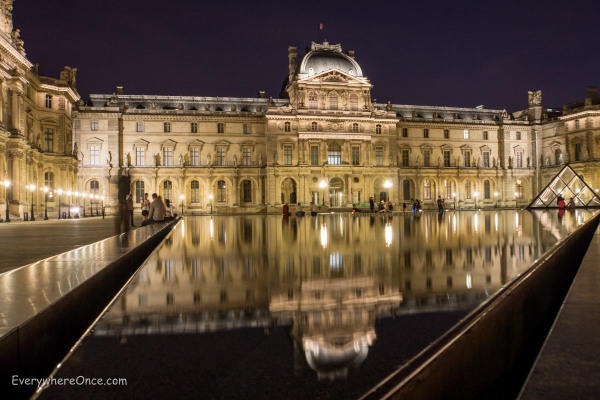





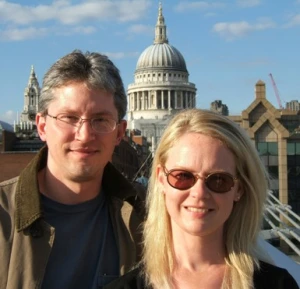
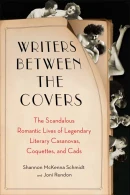
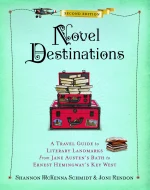


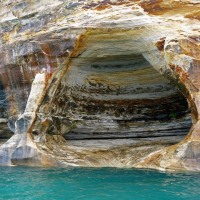
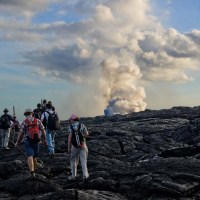



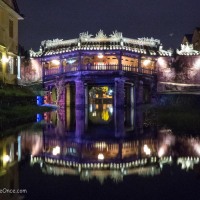

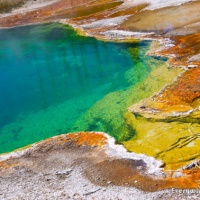
Nice post. After shooting with a dslr I just can’t see myself ‘downgrading’ to a point and shoot even if it’s a camera with better specs. I’m increasing fed up with my current Nikon entry level dslr and will be looking to upgrade soon.
LikeLike
I hear ya. I can’t say I’m completely there yet either. If I didn’t have to carry everything I own on my back all the time, I probably wouldn’t be considering it.
LikeLike
The rx-100 is a great pocket camera. 21mp and a ten power zoom with hd video. Ninety nine per cent of every day photography are snaps. It won’t do high intensity power zooms but it’ll do panos and macro. Good all arout handy cam for about $600.
LikeLike
Sorry to hear about the demise of your camera! I have done a lot of photography while traveling (and traveling very light) and for me there are two key considerations: weight and zoom. I would not settle for a camera with limited zoom capability. Maybe three – size is important too.
Since going digital I have had a Canon that was too slow, a Minolta that was too big and fragile, a Panasonic Lumix that worked well, and currently a Nikon Coolpix with an 18x zoom. I like the Nikon but have decided I downsized too far, as I can’t alter the depth of field.
Do you know about this site? http://www.dpreview.com/
LikeLike
I agree that having a wide ranging zoom gives you a lot of extra capabilities, which is good to have when traveling. That’s the reason I didn’t bring the sharper 18-55mm lens I had with me and opted to use the larger, junkier 18-200MM instead. But that’s a pretty typical trade-off with lenses that cover a lot of ground. What you gain in reach you tend to lose in sharpness and speed. I wish I knew what the sweet spot was between the two. Maybe then I’d have settled on a camera system. 🙂
P.S. Love DPReview. They’re super informative.
LikeLike
You might read this, another traveler who votes for zoom capability:
LikeLike
One of the things we considered (but didn’t include in the article) is the option of getting one of those super-zoom point and shoot cameras as a stop gap. I think ultimately I’ll still want a second camera that produces better image quality, but having a 500MM equivalent optical zoom in your pocket is always handy.
LikeLike
Oops. Just seen this after commenting below. I find the super zoom digi compact an excellent choice for “ready anywhere” shots. So small and convenient to carry.
LikeLike
Out of curiosity I just did a quick search of my last 2,000 shots to see how often I used a long focal length. It turns out I maxed out my zoom (200MM) on a little over 4% of all those pictures. And of those it looks like I was using a longer than necessary zoom to try to coax some bokeh (a.k.a. background blur) out of the junky lens for about half of them. So I really only needed the longest zoom I had available around 2% of the time. Moreover, about 85% of my shots were taken at a focal length of 60MM or less.
Now the period over which those shots were taken (just the last month or so) didn’t include any wildlife viewing. If I were on safari, those numbers would look quite a bit different.
Nonetheless, it’s eye-opening for me to see just how little I rely on a zoom I thought I absolutely needed. I’m going to go perform the same exercise over a longer time frame. If the numbers come out the same, I may well stop worrying about needing a long lens almost at all.
LikeLike
Before we started our 2-year trip my camera broke and so I was faced which your dilemma. I wrote all the qualities I wanted in a camera and then ranked their importance to me. Scoring highest in priority for me was small size since I can’t easily carry even a midweight camera. Next down was quality of shots, etc… Then I read reviews and determined the camera that best suited my needs was a Sony RX100. How has it been? After almost 2 years I’d say very good. Not perfect but certainly fits what I wanted and needed. It’a dilemma but clarity on what you want and allowing reviews (I used dpreviews) to give an unbiased rating helped me narrow it down. Good luck.
LikeLike
So what would you like to see improved on the RX 100? As that is one of the cameras we’re considering, it’s always good to hear about the shortcomings from people who own one.
LikeLike
We’ve never had a SLR camera so wasn’t familiar with some controls. No manual except online which is useless when you’re trying to learn to use the camera out in the field. So, for us it has been a learning curve. Also, bought a Sony camera case which was rather expensive but the only one available when the camera first came out. It’s not worked well so the camera has gotten a bit banged up. Otherwise, the photo quality is ever so much better. I do miss a better telephoto – but not enough to compromise the tiny size which is really terrific in my book. Good luck with the decision making and we’ll look forward to seeing what you decide.
LikeLike
I hear lots of talk on the Fuji x100 and x100s. Fixed lens great quality !!
LikeLike
I’m entering dangerous ground here seeing as i am far from expert! How about dumbing down to something like Cyber-shot Digital Camera HX50V. I’ve been using the earlier HX20 for a couple of years, and you can see the results I get my blog. If you know something about DSLR shooting then you could do much more with it, but I use it as a very portable, pretty flexible high quality “basic” point and shoot. I imagine it depends on your list of non-negotiables (eg: no RAW with this thing). From a “basic user” perspective the things I don’t like are; no viewfinder, tricky manual setting (though as I rarely use them, I imagine they would get easier with practice). I recently polled my FB friends for a new camera, and one suggested was getting a camera with environmental sealing -given I am in deserts and/or beaches a lot that made sense to me. However, these little Sony’s have been pretty tough and I get, for me, a good range of field of view and zoom (no idea if my terminology is correct 😉 And they are tiny.
LikeLike
Environmental seals would have come in really handy with my last camera. It’s one of the attractions of the Fuji, although I’m not certain even that would have saved it from the dunking it got. 🙂
The HX50V looks like a really neat little camera. Thanks.
LikeLike
I never thought I’d be able to switch from an SLR but for the past two years I’ve been addicted to a Panasonic DMC-TZ30. It does everything I want and I’m still learning . Worth a look, I’d suggest.
LikeLike
Thanks for the recommendation. I’ll take a look.
LikeLike
It sounds like you want something like a Canon Powershot, the models with super zoom etc. I read about the Canon Poweshot SX50 HS, and it sounds quite nice. I have one of these, but an older version from 2009. I also have a Canon DSLR. I still think this type of camera is great, and it seems it would fit your needs quite well. Wide angle lens, super zoom. And I can’t complain about picture quality.
Take a look at these two, maybe it’s not at all what you want but I just thought I’d give it a shot 😉
http://www.usa.canon.com/cusa/consumer/products/cameras/digital_cameras/powershot_sx510_hs
http://www.usa.canon.com/cusa/consumer/products/cameras/digital_cameras/powershot_g1_x_mark_ii
LikeLike
The Cannon SX50HS is one that I keep hearing good things about. Thanks for your help.
LikeLike
Hi Brian,
The Canon Rebel has been fine for my use to date. Shoots RAW which is handy. With the initial image capture quality compromised due to hardware limitations, (compared to full frame high end cameras) you may want to tweak with more with software.
Having said that I am loving the camera on the Nokia 1020. Amazing bit of kit. The panorama function is really intuitive and handy for the times when you can’t fit it all in one frame. Maybe consider this for 50% of your shots with an interchangeable lens camera fitted with a Zoon for longer shots and don’t have a second lens to carry around. This way you have a good phone, with a great compact camera and a dedicated camera for the shots where a longer focal length is required. You’ll need that when you get to Africa.
Cheers,
Jason
LikeLike
Having said that, the 1020 is like all phones.. hard to type on when you have fat thumbs 😊
LikeLike
Hi Jason,
Thanks for the comments. I think we’re leaning the other way in terms of looking at an “inexpensive” pocket-sized super zoom for those long focal lengths and a good interchangeable lens camera for everything else. A quick look at the actual photography I do suggests I shoot very little at longer focal lengths. So I don’t feel like I’d be sacrificing much by relegating those shots to a point and shoot type camera. Also good long lenses for interchangeable cameras are really, really big. I’m thinking it’s not worth carrying around all that metal and glass for the occasional shot.
LikeLike
I used a Fuji x pro while travelling last year in the USA, with a fixed 35mm lens. It was awesome. The photo quality in both day and night shots are beautiful.
A few months ago I bought the fuji xt1 and it has been performing really well. Highly recommended! It also comes with a litte external flash.
LikeLike
I love the idea of traveling and shooting solely with a good prime lens. I’m not sure I could actually do it though. Did you feel like you missed a bunch of shots?
LikeLike
Interesting that you don’t seem to be using much zoom. I checked some of my photos – http://kwilhelm.smugmug.com/Travel – and I used the zoom a lot at Iguazu falls, and not much around Montevideo, so it may depend on where and what you’re shooting. Even back when I was using an SLR my most-used lens had some zoom – 135 mm I think.
LikeLike
It definitely depends on where you are. Naturally I used more zoom in Alaska, but even then only about 15% of my shots were at the 300MM maximum I had available. That’s not nothing, but I’d have guessed I used it more.
But I like the idea of a small super zoom even if it isn’t my main camera. There’s no way to replicate their reach without carrying a monster lens.
LikeLike
I see so many travelers lugging around DSLRs only to use the “automatic” settings 95% of the time and maybe pull out a tripod every once in a blue moon. Is it really worth all that trouble? Granted, these are usually the same people with 2 large suitcases, so I guess they just don’t believe in packing light. Getting rid of the weight of that DSLR can be a blessing. I have a Samsung WB150F that I got 2 years ago, so the feature-rich compact camera market has probably improved since then. Honestly, with my fellow amateur photographer friends, the pictures between high end point and shoot vs DSLR look pretty much the same. You can only really see the difference when it’s an experienced professional photographer using a DSLR – a normal person takes essentially the same pictures with a DSLR or without. It’s not worth lugging the weight around.
LikeLike
I agree about not wanting to carry around the weight of a DSLR. And I haven’t used a point and shoot camera for years, so I can’t comment on how good they’ve become. I do know that I’ve gone out of my way to get shots – getting up early, going out late, scouting out locations and returning when the light was better. To do that you have to believe you’re working with camera gear that is good enough to make that effort worthwhile. Maybe the new breed of point and shoots are up to the challenge. I just have a hard time believing they’ll inspire me to want to go out purely for the sake of taking pictures.
LikeLike
I have been shooting with Nikon SLRs and DSLRs for over 30 years. I cannot imagine using a point and shoot camera for a once in a lifetime travel shot.
If I had to give up my DLSR i would use the Nikon mirrorless system.
LikeLike
I’m an advocate of carrying two cameras while traveling—one with a good zoom and the other with a wide-angle zoom so you never have to change lenses. Since point-and-shoots are getting better and better, you could find two lightweight cameras for the job and still have pretty good quality. I have an old reliable Nikon D90 (too heavy for your situation). It’s low-light quality is not good, but for everything else, it’s fabulous. I pair it with a Tamron 18-270 (effective 27-405). Last year, I added a lightweight Sony NEX6 with a short wide-angle zoom. Fabulous low-light capability, great quality, and a viewfinder—which was absolutely necessary for me. I took both to Argentina last November and carried both in my purse (a PacSafe shoulder bag that is slash proof). In Buenos Aires, I used the w/a mostly, but in the country (penguin colony, whale-watch expedition, guanacos at the side of the road, gaucho parade, Iguazu Falls, etc. it was so handy to have both and quite easy and fast to switch. One camera can’t do it all, and changing lenses often means missing shots (as well as opening the sensor up to dust). The two small-camera situation sounds like it might be the ticket for you.
LikeLike
I’m coming to the conclusion that a “two camera” solution is the way to go. And everyone’s comments on this post are helping to bring the issue into, ahem, focus for me.
One thing I’ve learned is that I hate changing lenses. Both for the reasons you suggest and also because it just seems so disruptive to whatever we’re doing at that moment. So I’m thinking of that I’ll get a new mirrorless interchangeable lens camera with one good lens that basically just stays on the body. And one compact super zoom camera for when I want a longer lens. Besides, it’s not like I’ll pack this thing in my bag:
LikeLike
Thanks for posting this, I always have a hard time deciding what camera to use on my trips. I love my Nikon DSLR but it’s indeed too heavy & w/ lenses forget it! I like the idea of 2 cameras since currently I’ve been using my new Samsung 5 a lot but need an alternate for low light & zoom. I’ll have to go back & research some of these great suggestions, thanks !!
LikeLike
Regarding point and shoot, have you considered a Nikon Coolpix L820? I am not a photographer by any means, but needed something a little better than what I had to take product photos. It has a decent zoom feature, but you can’t use interchangeable lenses. I would love to know your thoughts on this camera and am curious to see what you will end up with.
LikeLike
I’ve been going through the same tough decision. My current camera is a Nikon D40 DSLR with an 18-200 (28-300 equivalent) lens. I was planning to upgrade to the Nikon D3300 but the size and weight mean I rarely have it with my. I end up taking more photos with my iPhone since I carry it. I’ve finally decided on the Olympus Stylus 1. It’s a superzoom but with a larger sensor than most, f/2.8 through the entire 28-300mm range, and is very small/light. It should fit in my cargo pants pocket, but is still great camera for manual control. It’s in my Amazon cart waiting for me to click “buy” :-). Check out this size comparison of my D40+lens to the Olympus: http://camerasize.com/compact/#494,189.36,ha,t
LikeLike
It’s so true that the best camera is the one you have with you. Thanks for the recommendation on the Olympus.
LikeLike
Why haven’t you considered the Sony RX10? It seems to fulfil most of what you need – more than any other camera. 🙂
LikeLike
I had considered the Sony RX10. I’ve heard good things about the camera, but I ultimately decided against it for a few reasons. It’s not really a small camera – more like a fixed lens DSLR. And it’s not a cheap camera. The Sony A6000 I wrote about is several hundred dollars cheaper (with the kit lens), a bit smaller, with a better camera body to boot. Sure, it doesn’t have the telephoto capabilities of the RX10, but the long zoom isn’t something I really use a ton anyway.
So that’s why the RX10 didn’t make my personal cut, but like I said, other people have had nothing but good things to say about it.
LikeLike
Over the years I have had, or still have, almost every camera you have discussed. I have also been searching for the holy grail. After years of using Canon equipment, all pro gear like the 5DmIII and L glass, I switched my full kit to Sony. I started with the NEX line. Paired with the right glass it was a nice kit. My kit now consists of the A6000 as my prime camera. I use th a6000 for all important shoots and have another back up camera. It is the backup camera that I suggest you look at. It is the Sony RX10 and there are very few cameras as capable as it for vacation or everyday shooting. It also takes awesome video. When on vacation this is my run about camera, until someone comes out with an affordable 16-200mm f/2.8 for the a6000. Only other camera that is close is the Panosonic Lumix FZ1000..there are trade offs to both, but the Pano is much less expensive, making it a great option…..just some of my experiences, hope they help.
LikeLike
Choosing the best camera for travelers can be a daunting task, but this blog post has really helped me narrow down my options. The insights and recommendations provided are invaluable for anyone looking to capture their adventures in stunning detail. I appreciate the thorough analysis of different camera types, and it’s evident that the author truly understands the needs of travelers. This post has made my camera shopping decision much easier. Thanks for the guidance!
LikeLike